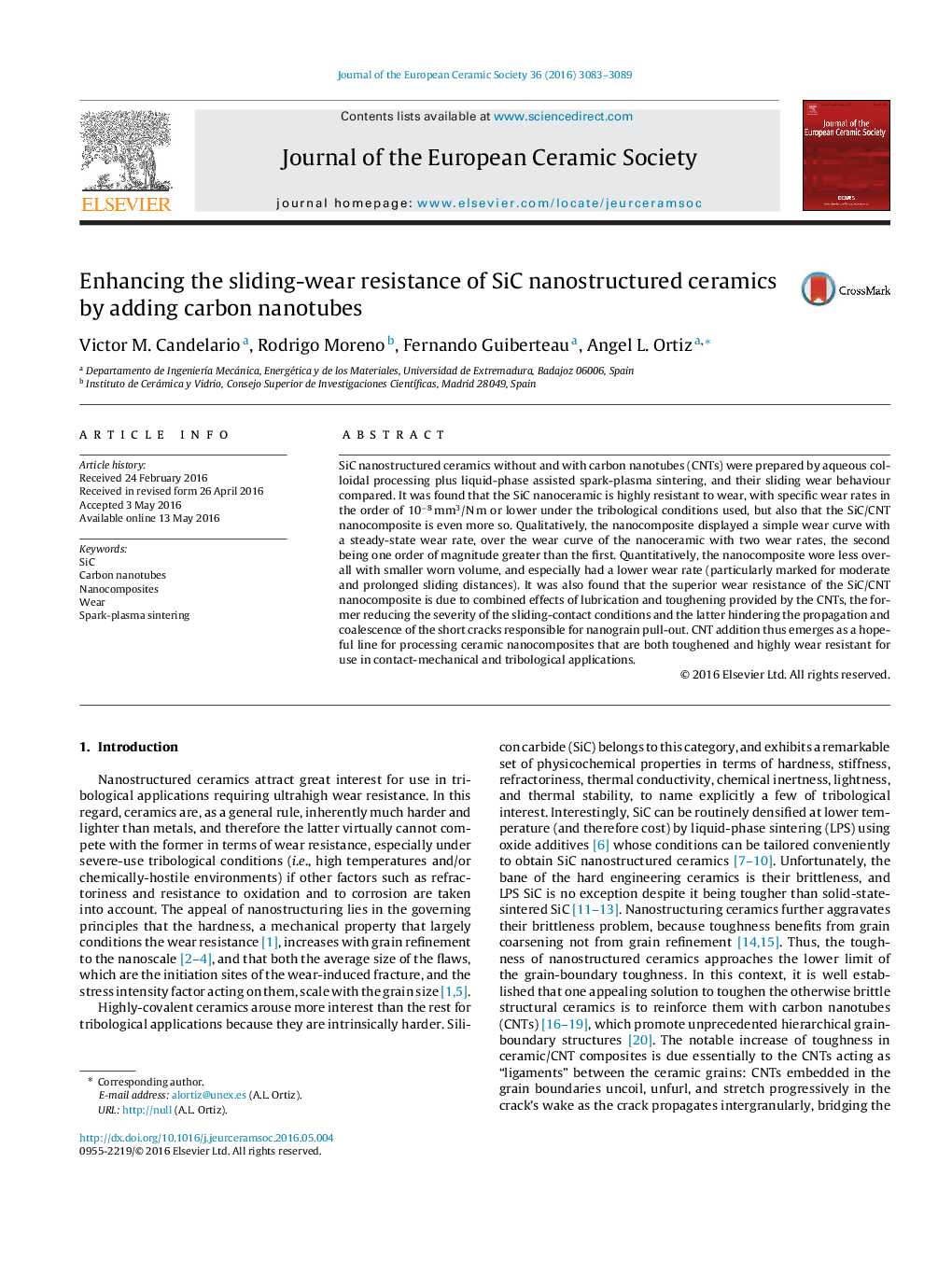| Article ID | Journal | Published Year | Pages | File Type |
|---|---|---|---|---|
| 1473648 | Journal of the European Ceramic Society | 2016 | 7 Pages |
SiC nanostructured ceramics without and with carbon nanotubes (CNTs) were prepared by aqueous colloidal processing plus liquid-phase assisted spark-plasma sintering, and their sliding wear behaviour compared. It was found that the SiC nanoceramic is highly resistant to wear, with specific wear rates in the order of 10−8 mm3/N m or lower under the tribological conditions used, but also that the SiC/CNT nanocomposite is even more so. Qualitatively, the nanocomposite displayed a simple wear curve with a steady-state wear rate, over the wear curve of the nanoceramic with two wear rates, the second being one order of magnitude greater than the first. Quantitatively, the nanocomposite wore less overall with smaller worn volume, and especially had a lower wear rate (particularly marked for moderate and prolonged sliding distances). It was also found that the superior wear resistance of the SiC/CNT nanocomposite is due to combined effects of lubrication and toughening provided by the CNTs, the former reducing the severity of the sliding-contact conditions and the latter hindering the propagation and coalescence of the short cracks responsible for nanograin pull-out. CNT addition thus emerges as a hopeful line for processing ceramic nanocomposites that are both toughened and highly wear resistant for use in contact-mechanical and tribological applications.
